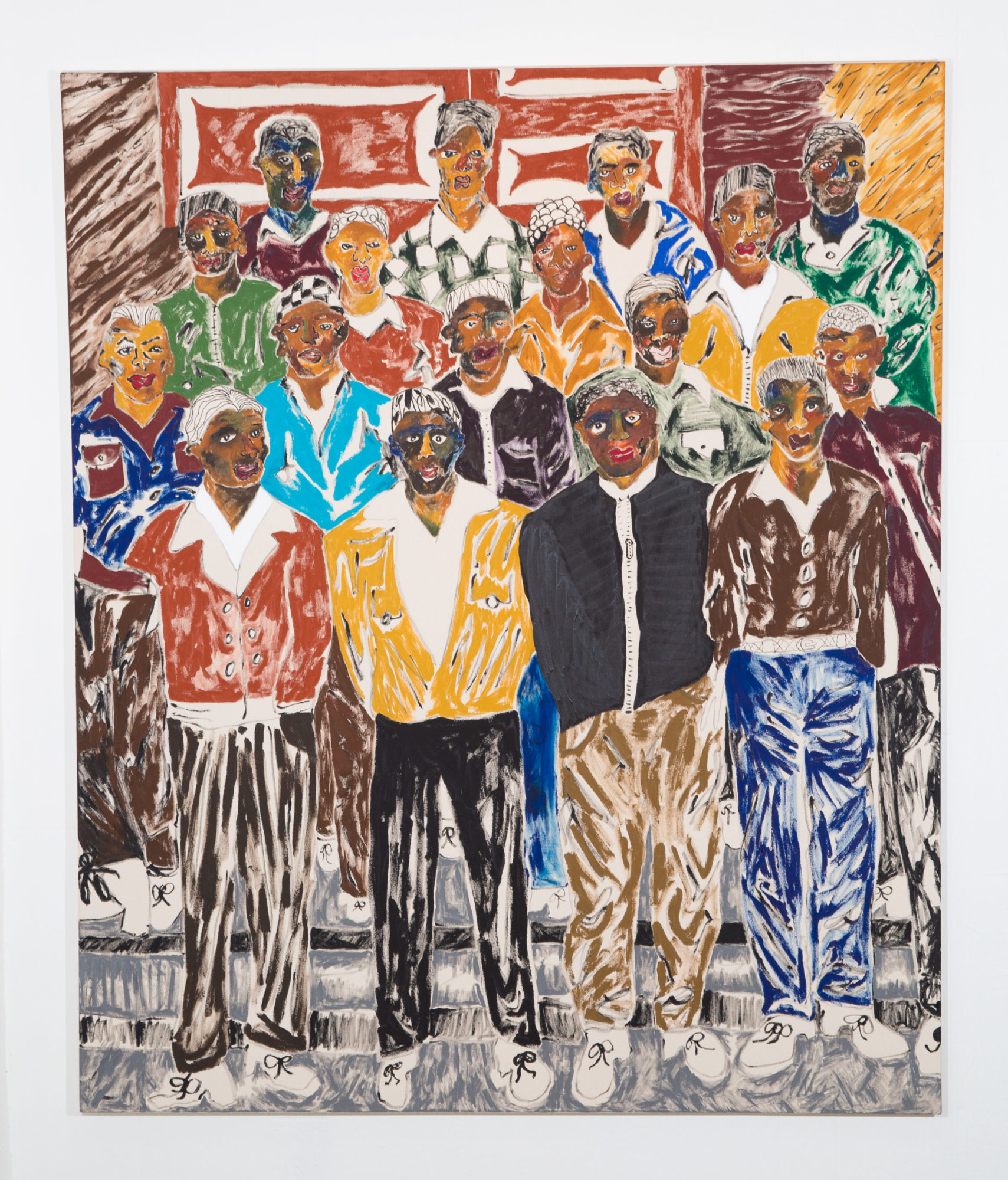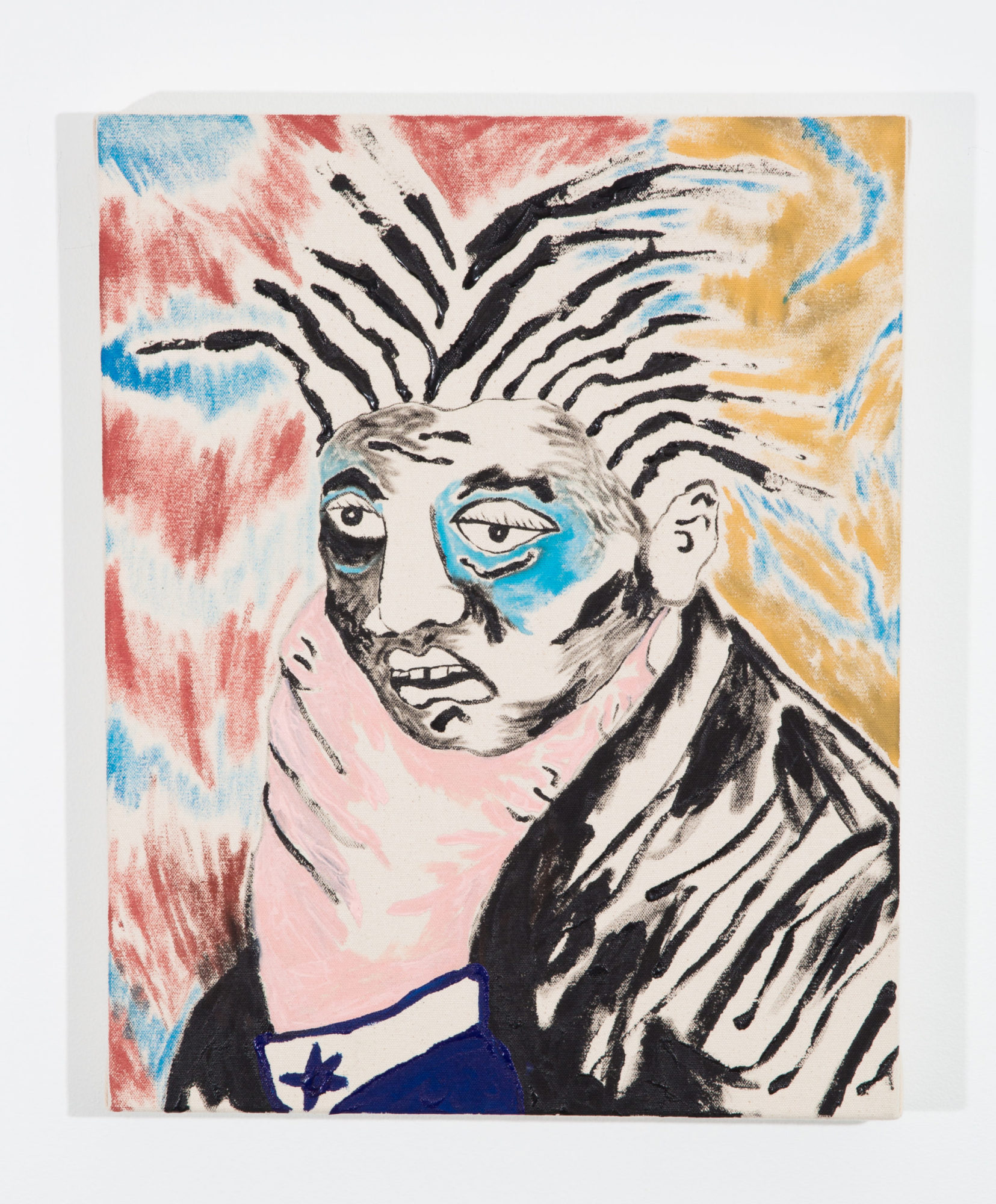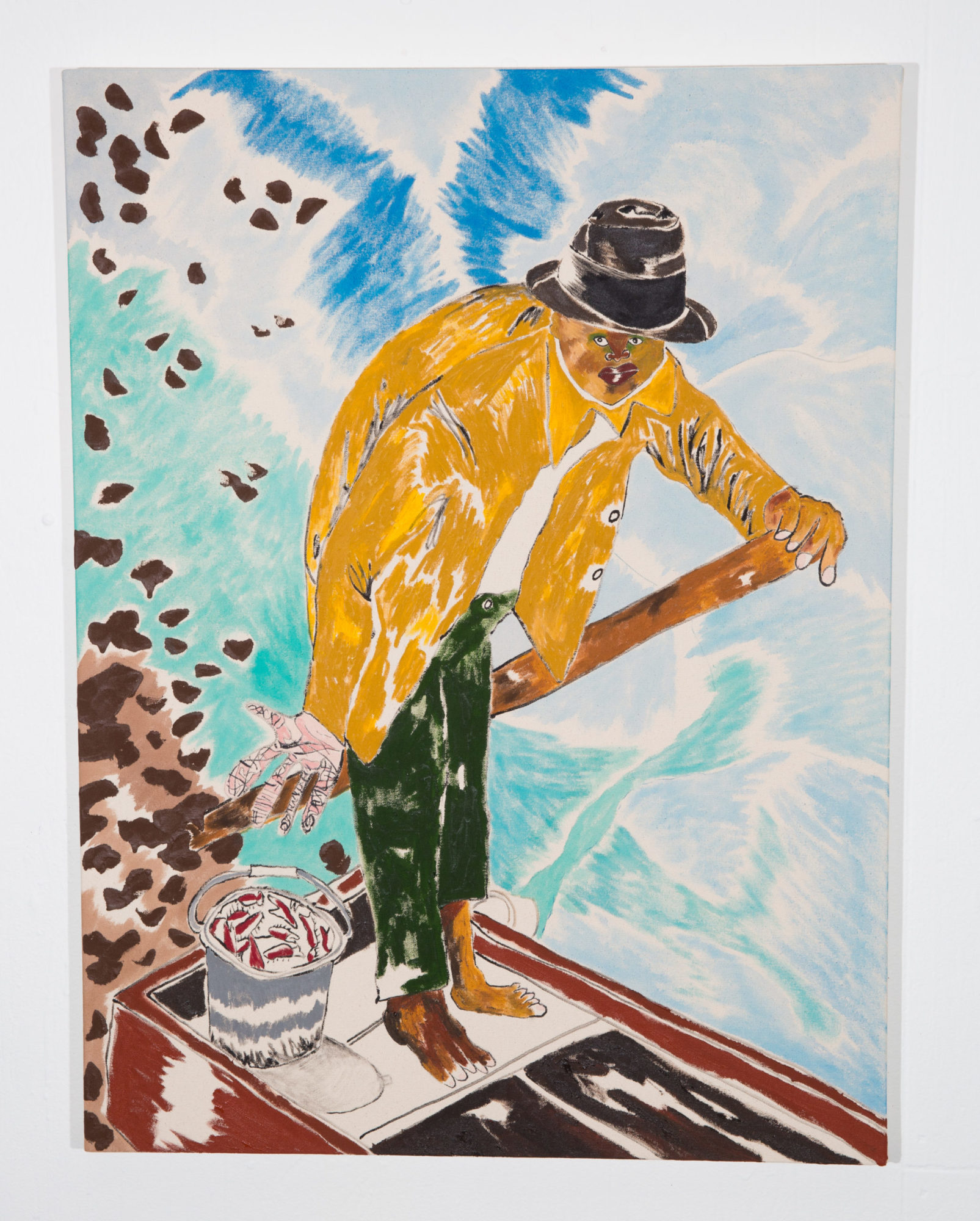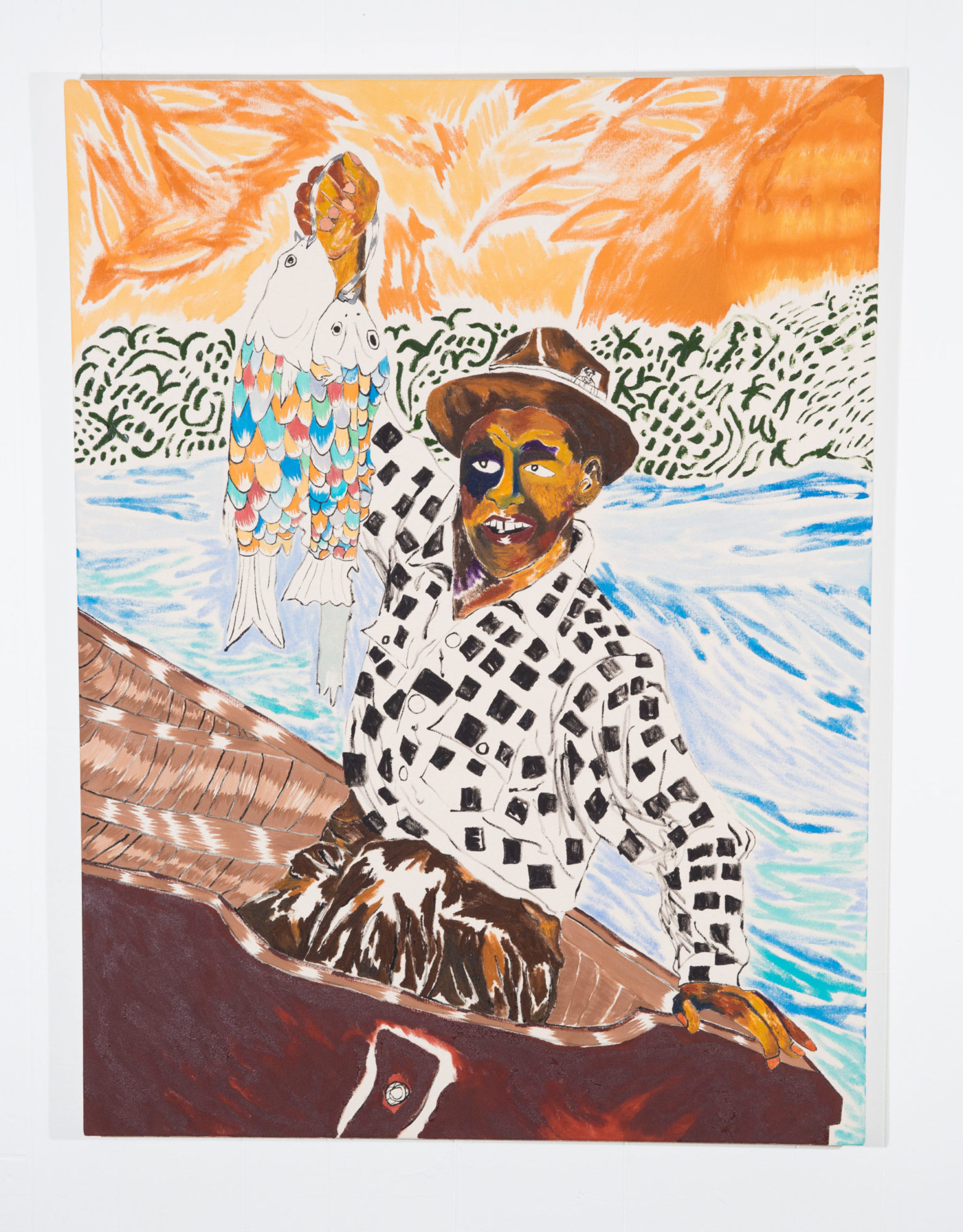Chase Hall

Chase Hall, Single moms boys choir, 2020, acrylic on canvas, 72 x 60 inches [courtesy of Chase Hall Studio]
Share:
On a recent studio visit with New York-based artist Chase Hall, I encountered a cabinet of curiosities: vintage and antique collectibles—records, postcards, cookie jars, toys, figurines, advertisements, tea towels, and more. Hall has mined these distinctive American cultural artifacts from the 19th and 20th centuries. Many of the items are racially offensive and melancholic. Seeking to chronicle the immense impact of Black popular culture in White America’s imagination, from the earliest instances of minstrelsy to the rise of the modern Black athlete, Hall has cultivated the charge of these objects into a stirring and singular mode of expression. With his paintings, sculptures, and photographs, Hall has set himself on a journey to mine the gap between the intimacies of Black life and the traces of psychopathology—to borrow the term from filmmaker Arthur Jafa—that gives the appearance of White supremacy an uneasy palatability. The artist argues for his investment in “how these images, such as postcards and advertisements, have signified or perpetuated segregation, the dehumanization of Blackness, and a one-sided version of American history told by positions of power.” Large–scale portraits of Thelonious Monk, Harriet Tubman, and Arthur Ashe brim with vivid color and raw emotion.
Chase Hall, Fourth of July, 2020, acrylic on canvas, 20 x 16 inches [courtesy of Chase Hall Studio]
Hall has found himself leaving sections of canvas exposed in his rendering of these historical giants. The negative space affords him critical distance and enables his conceptual play. Who are these figures in the White imagination? How can history celebrate their iconicity while systematically oppressing scores of invisible and unknown Black faces in the centuries since the traumas of slavery?
Chase Hall, Crawfish (got it out the mud), 2020, acrylic on canvas, 40 x 30 inches [courtesy of Chase Hall Studio]
Chase Hall, Dale caught two rainbow trout, 2020, acrylic on canvas, 48 x 46 inches [courtesy of Chase Hall Studio]
Jessica Bell Brown is the associate curator for contemporary art at the Baltimore Museum of Art and the former consulting curator at Gracie Mansion Conservancy. Before joining the BMA, Brown helmed roles at Creative Time, the Brooklyn Academy of Music, and The Museum of Modern Art in New York. A PhD candidate in modern and contemporary art at Princeton, Brown does art historical research into American painting and identity in the post-civil rights decade. Brown’s writing and art criticism has appeared in catalogues and publications for The Studio Museum in Harlem, New Museum, Lévy Gorvy, The Museum of Modern Art, Flash Art, Hyperallergic, Artforum, and The Brooklyn Rail.


